Abstract
The major dependent variable was the rate at which first and second-grade students printed or wrote daily copying assignments. Data were also taken on the percentage of letters scored as errors according to a set of scoring criteria. Initially, these data were collected during a baseline condition in which each child returned to his seat as soon as his completed work had been scored, to wait for the rest of the class to finish their assignments. When the children were allowed to go to a playroom after their papers had been scored, there was a reliable increase in the mean printing or writing rates. Subsequent introductions of the baseline and playroom conditions replicated the relative effectiveness of access to the playroom to produce higher work rates. Finally, the total amount of time allowed for children to complete their assignments and then play was progressively reduced from 50 to 35 minutes. A progressive increase in work rates was correlated with these changes. Throughout the experiment, there was considerable variability in the mean number of letters scored as errors but there was a clear trend towards fewer errors.
Full text
PDF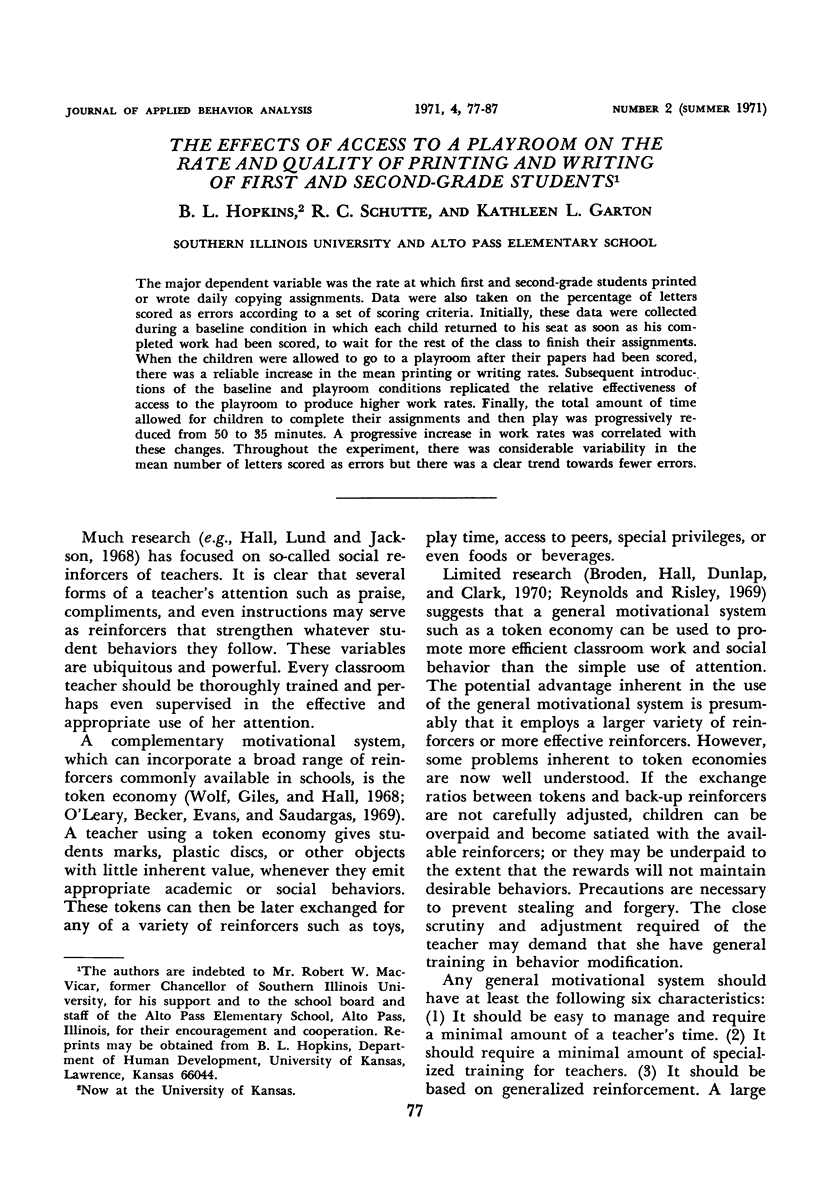
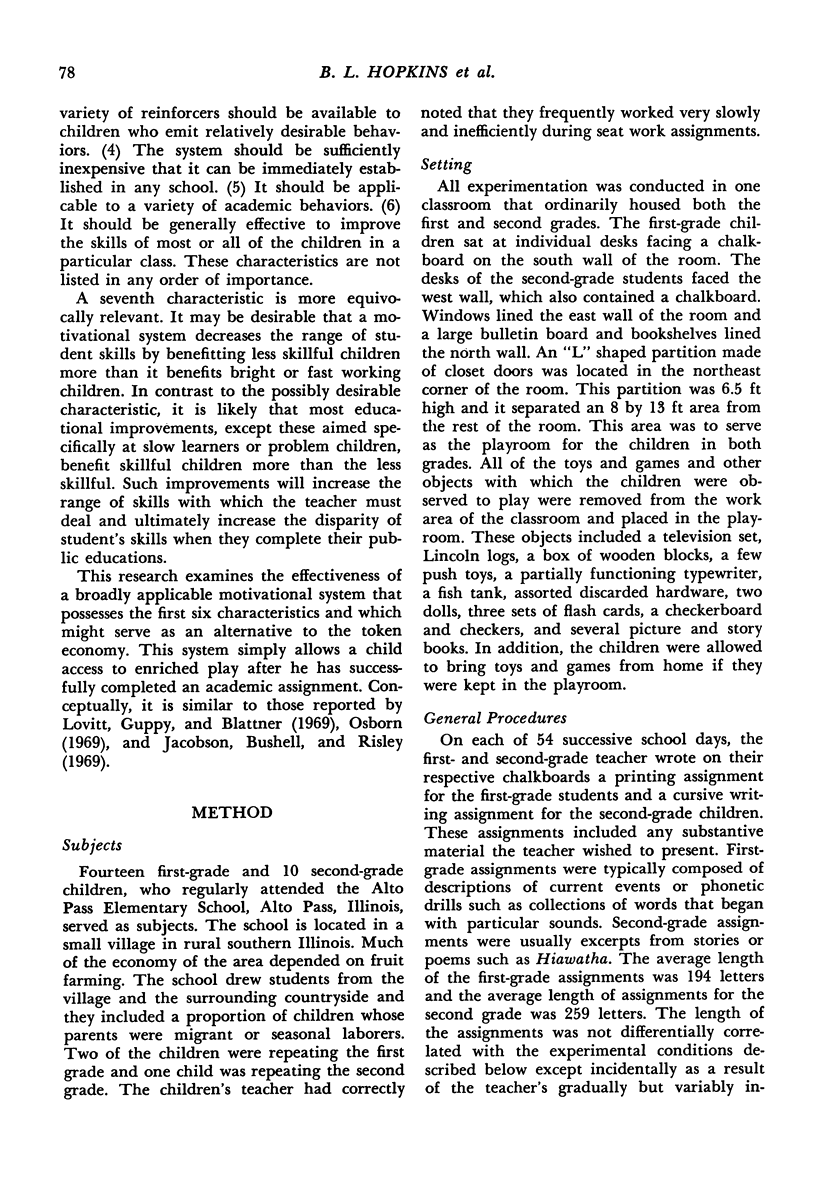
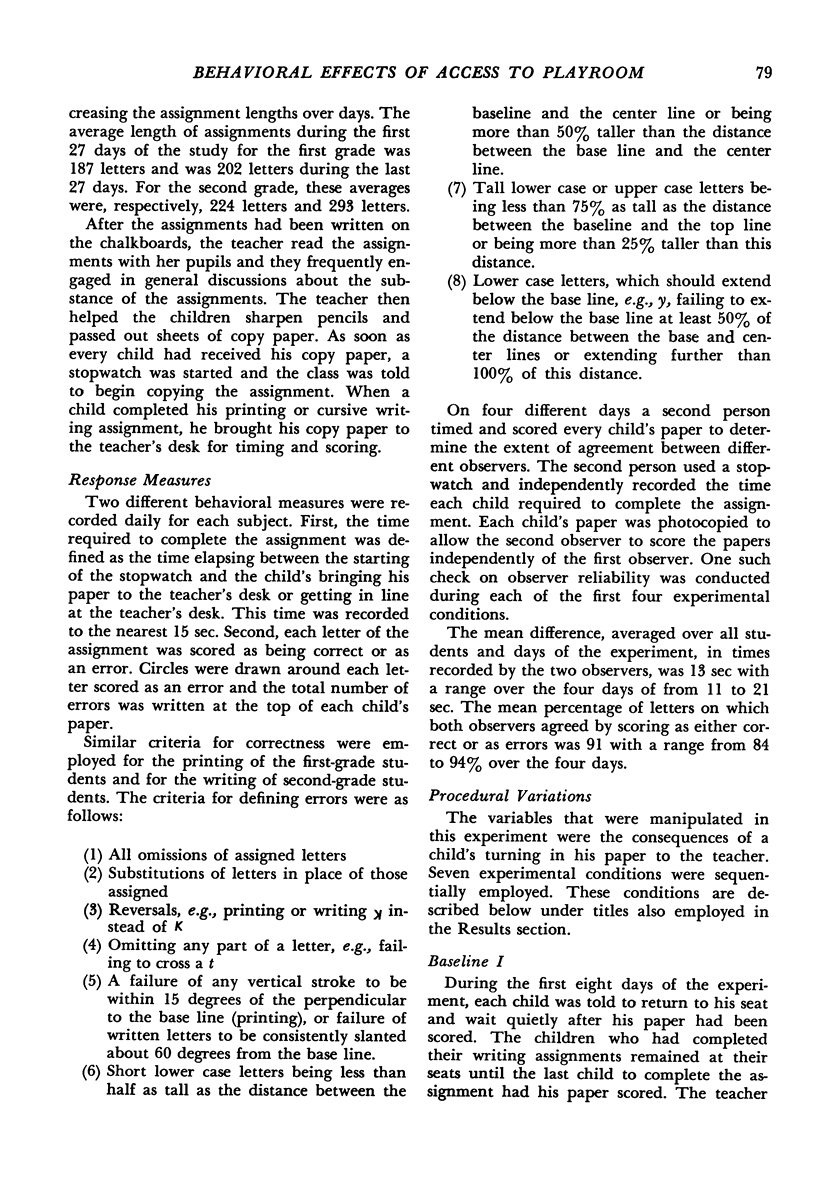



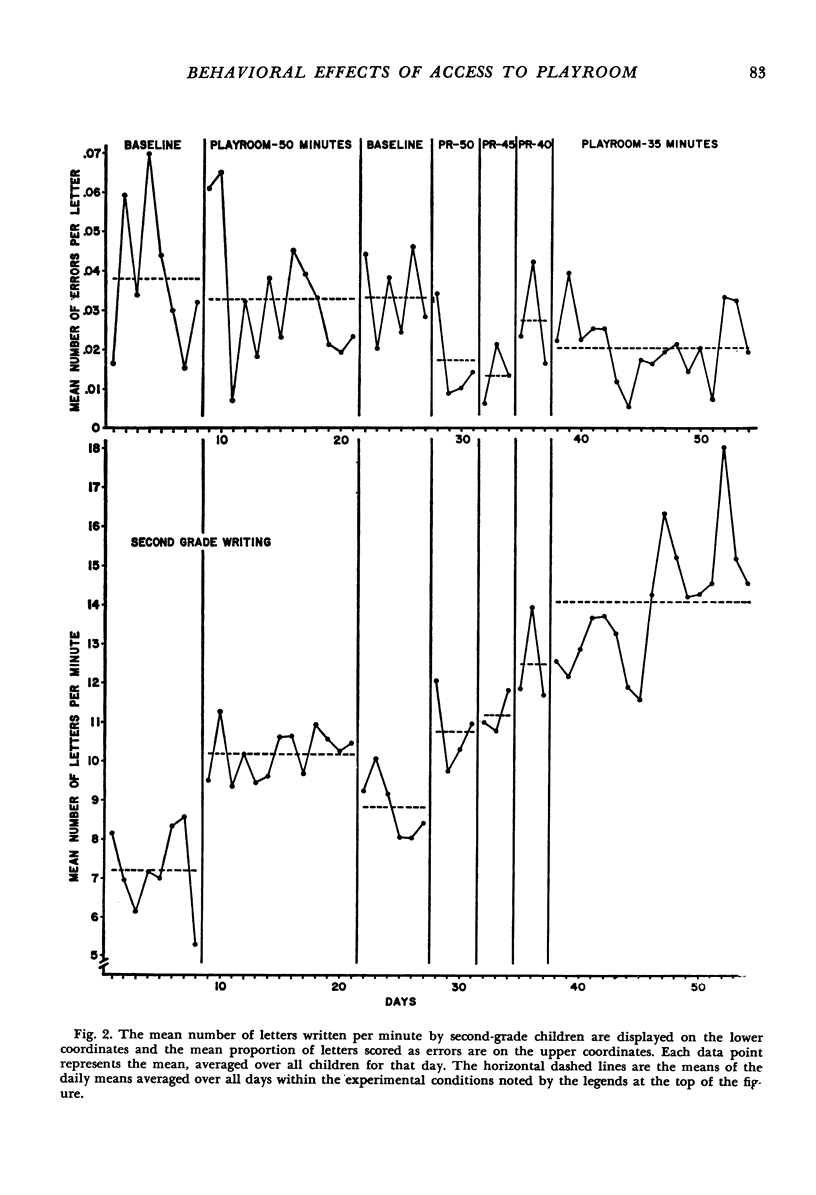
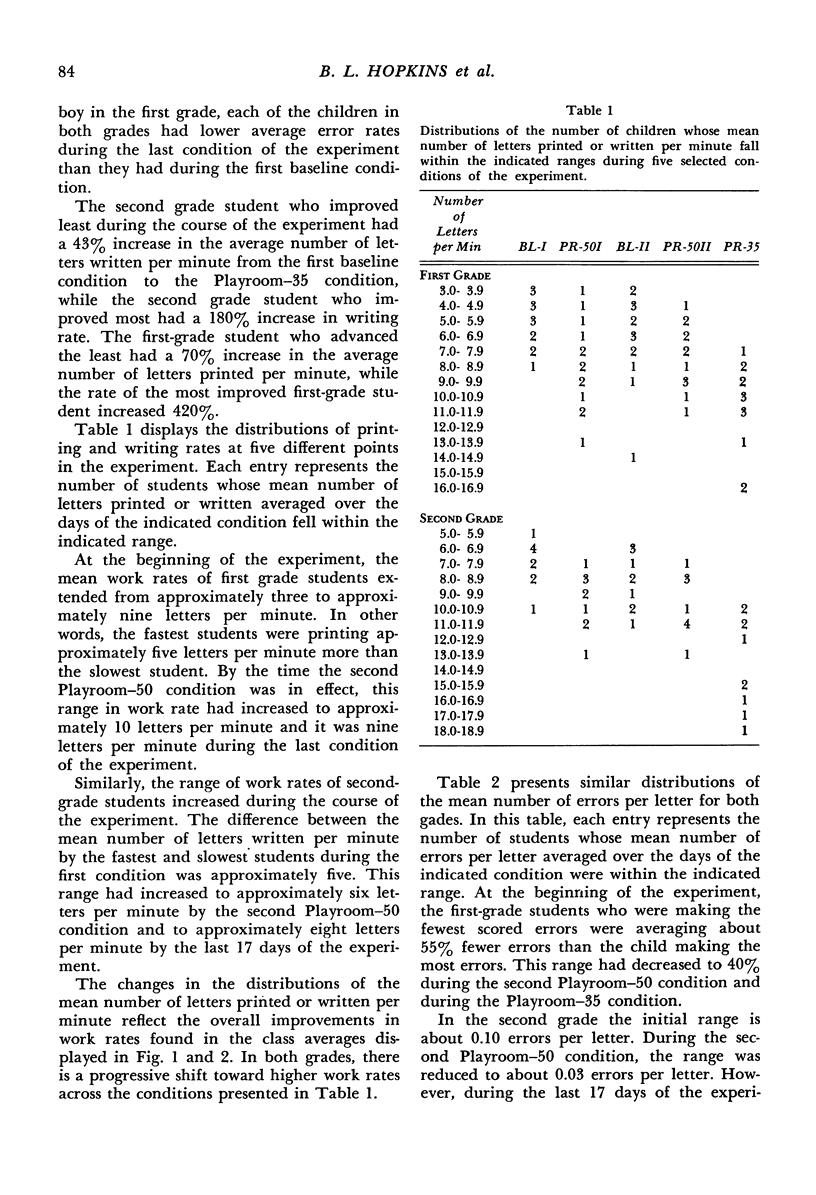
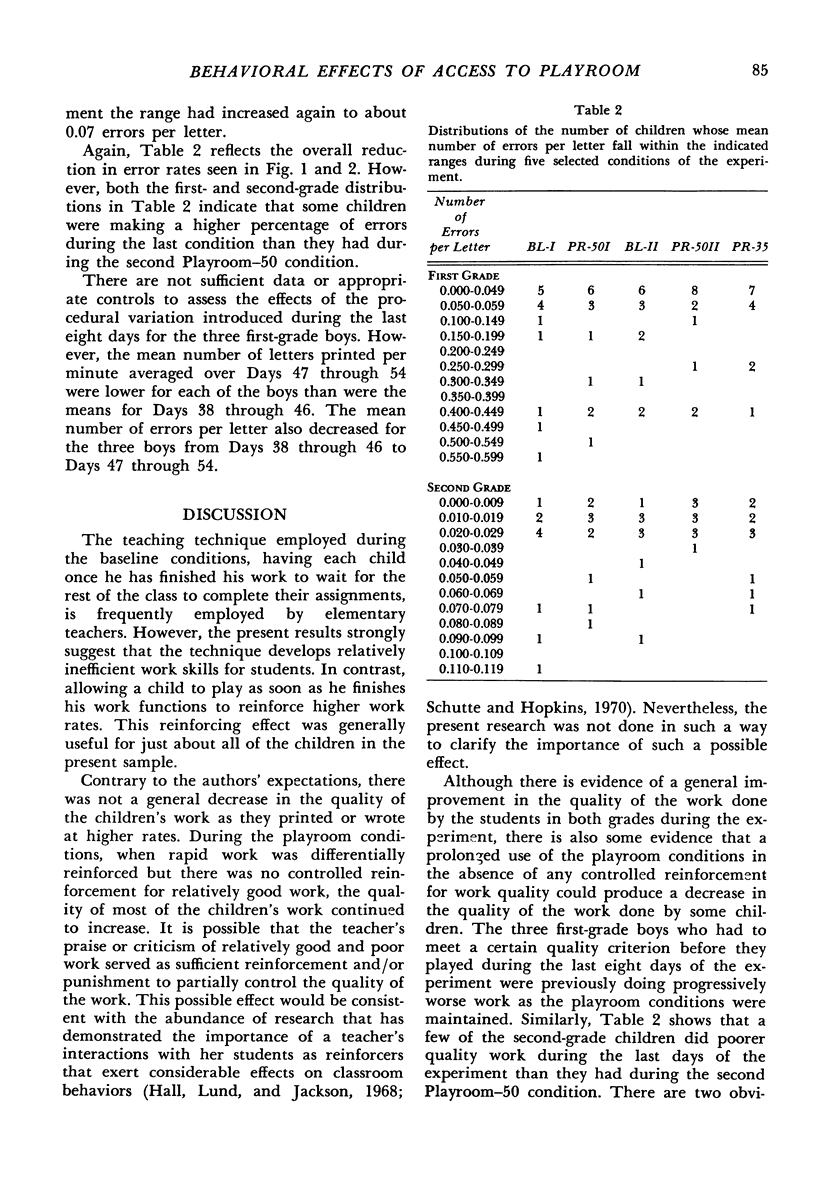
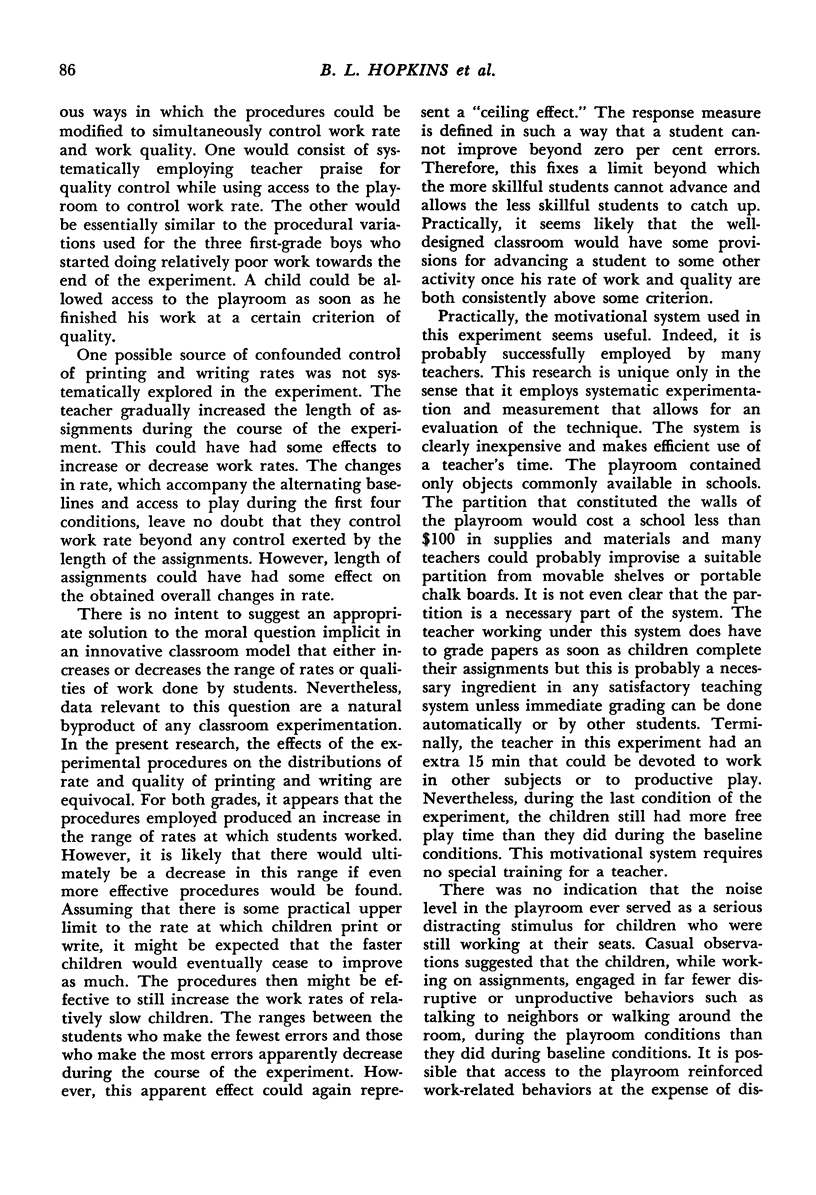
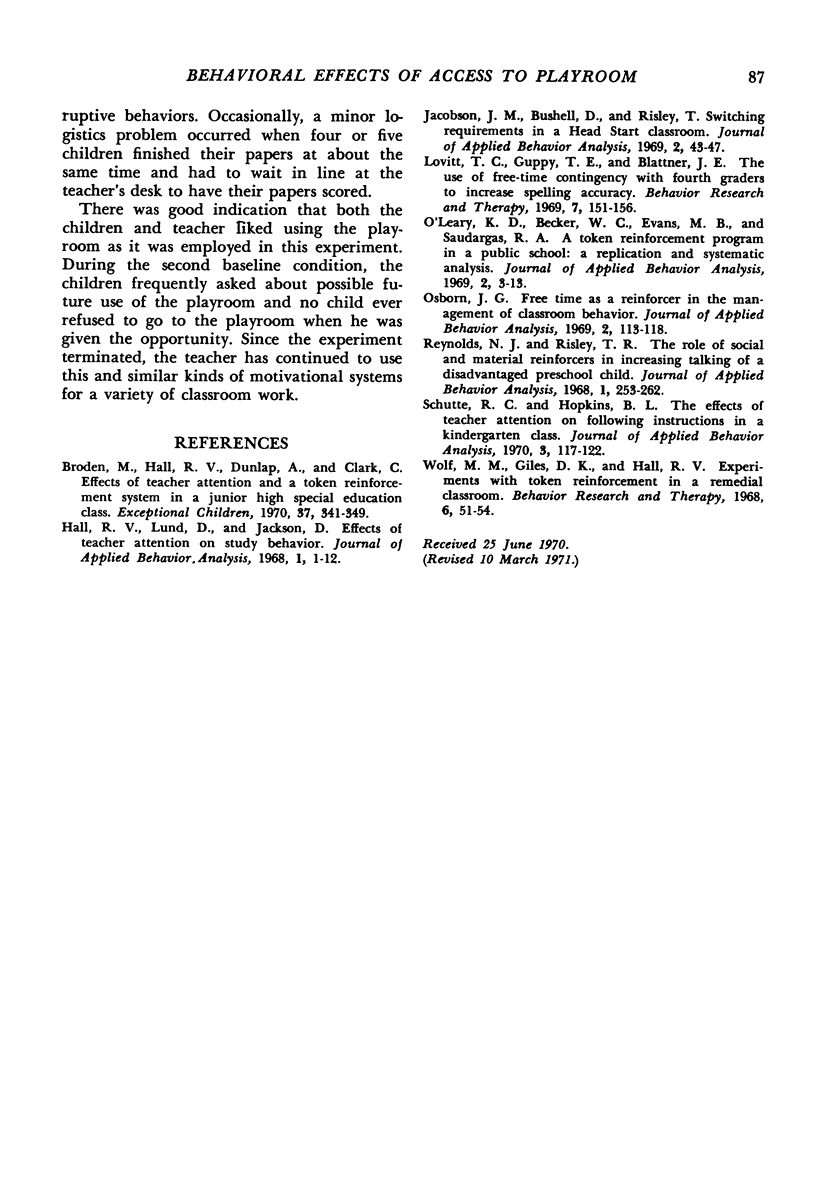
Selected References
These references are in PubMed. This may not be the complete list of references from this article.
- Broden M., Hall R. V., Dunlap A., Clark R. Effects of teacher attention and a token reinforcement system in a junior high school special education class. Except Child. 1970 Jan;36(5):341–349. [PubMed] [Google Scholar]
- Hall R. V., Lund D., Jackson D. Effects of teacher attention on study behavior. J Appl Behav Anal. 1968 Spring;1(1):1–12. doi: 10.1901/jaba.1968.1-1. [DOI] [PMC free article] [PubMed] [Google Scholar]
- Jacobson J. M., Bushell D., Risley T. Switching requirements in a Head Start classroom. J Appl Behav Anal. 1969 Spring;2(1):43–47. doi: 10.1901/jaba.1969.2-43. [DOI] [PMC free article] [PubMed] [Google Scholar]
- O'leary K. D., Becker W. C., Evans M. B., Saudargas R. A. A token reinforcement program in a public school: a replication and systematic analysis. J Appl Behav Anal. 1969 Spring;2(1):3–13. doi: 10.1901/jaba.1969.2-3. [DOI] [PMC free article] [PubMed] [Google Scholar]
- Osborne J. G. Free-time as a reinforcer in the management of classroom behavior. J Appl Behav Anal. 1969 Summer;2(2):113–118. doi: 10.1901/jaba.1969.2-113. [DOI] [PMC free article] [PubMed] [Google Scholar]
- Reynolds N. J., Risley T. R. The role of social and material reinforcers in increasing talking of a disadvantaged preschool child. J Appl Behav Anal. 1968 Fall;1(3):253–262. doi: 10.1901/jaba.1968.1-253. [DOI] [PMC free article] [PubMed] [Google Scholar]
- Schutte R. C., Hopkins B. L. The effects of teacher attention on following instructions in a kindergarten class. J Appl Behav Anal. 1970 Summer;3(2):117–122. doi: 10.1901/jaba.1970.3-117. [DOI] [PMC free article] [PubMed] [Google Scholar]
- Wolf M. M., Giles D. K., Hall R. V. Experiments with token reinforcement in a remedial classroom. Behav Res Ther. 1968 Feb;6(1):51–64. doi: 10.1016/0005-7967(68)90042-9. [DOI] [PubMed] [Google Scholar]


